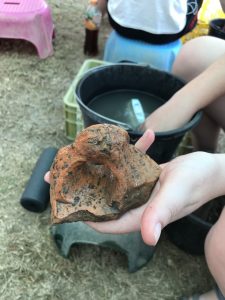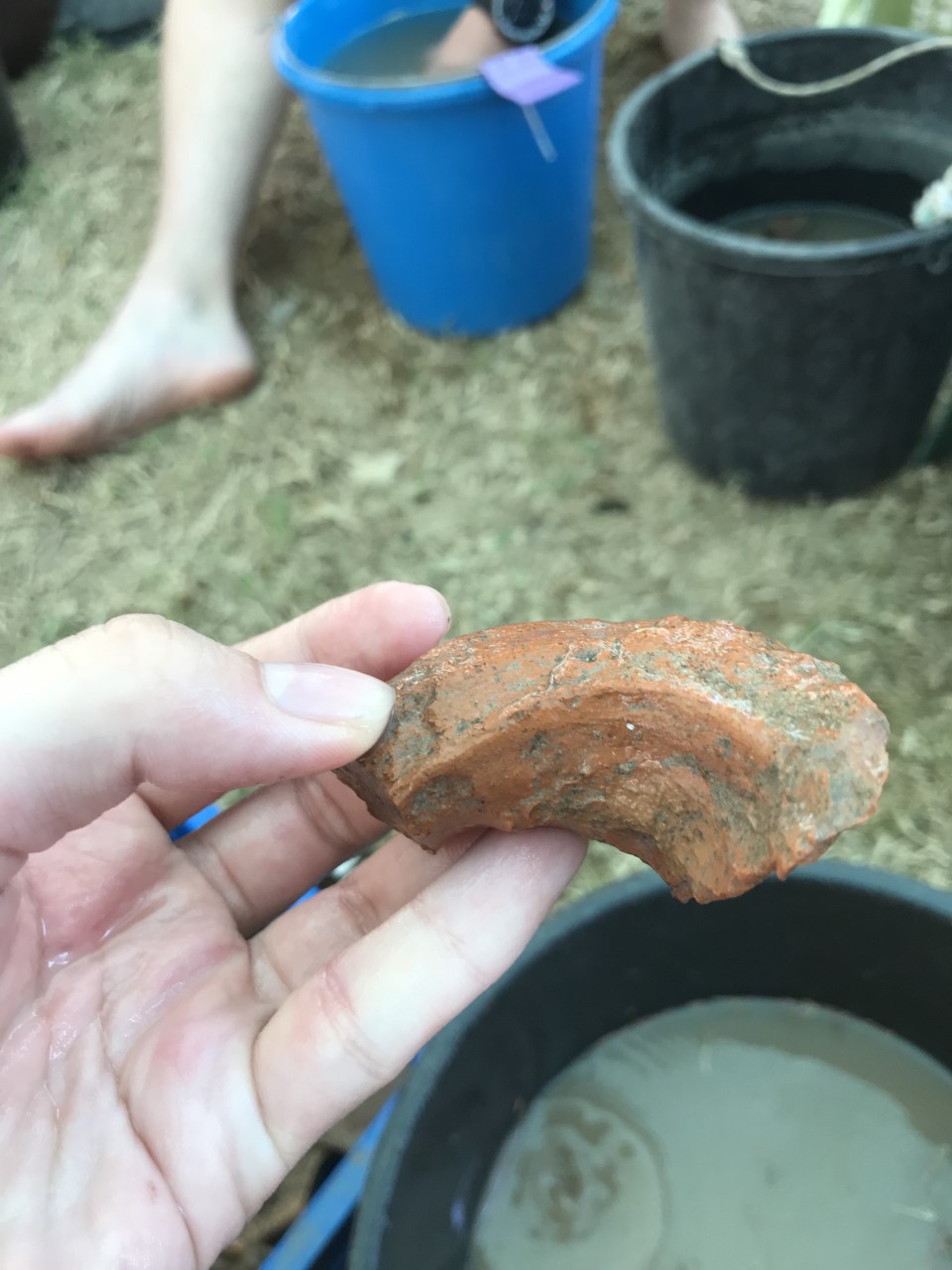

When I first began excavating I was told that one good way to tell pottery from rock was from the ridges on the inside. These ridges come from the artists fingertips as they shape the inside of the clay. I remembered the ceramics class I took in highschool and the way that our fingers would make impressions in the clay as we molded it on the wheel, making it pretty recognizable. Today most things, like glass bottles, and plates, are not handmade. This means that a lot of what we make today bears no personal touch. Because the pottery we found was made with hands, even if it was on a wheel, the artist leaves his or her own signature. A lot of this personalization can be seen in the pottery handles (photos attached). A technique for making the curved handles on pots was to pull and stretch the clay into a curved shape. These handles differ from a lot of handles that we find that have perfectly smoothed handles. While these smoothed handles are more aesthetically pleasing, the more imperfect ones have more character. The artifacts that we find are from a time that was very different from the one we live in now. This can make it hard to connect with, as it is not from a way of living that we necessarily understand. A lot of the pottery we find is broken as has been discarded, similar to the way that plastic is thrown away today. As we excavate for scientific purpose, we also take a more removed viewpoint. While we find lots of different artifacts on the tel that can be hard to connect with, I think that the more imperfect pottery is the artifact that I can connect with most. The imprints of the artist hands allow me to imagine just who made the artifacts that we excavate and wash.

No Comments